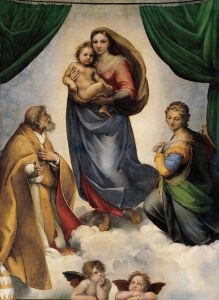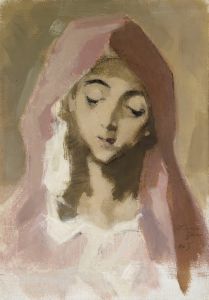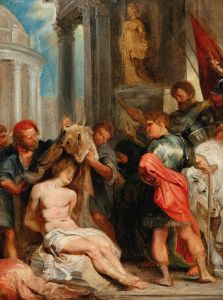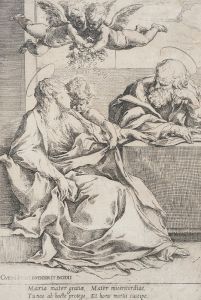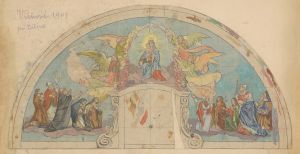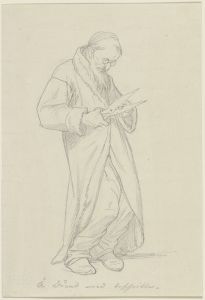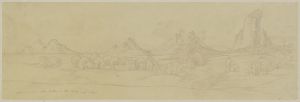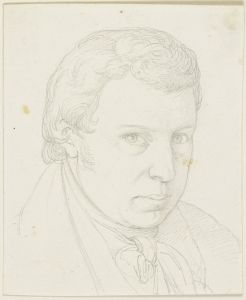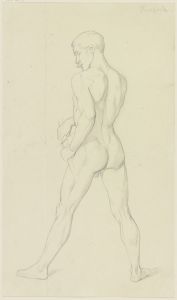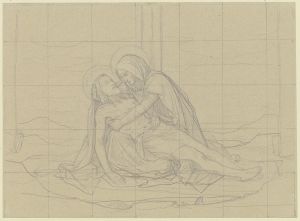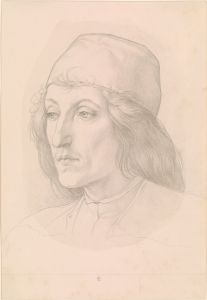
Madonna
A hand-painted replica of Eduard von Steinle’s masterpiece Madonna, meticulously crafted by professional artists to capture the true essence of the original. Each piece is created with museum-quality canvas and rare mineral pigments, carefully painted by experienced artists with delicate brushstrokes and rich, layered colors to perfectly recreate the texture of the original artwork. Unlike machine-printed reproductions, this hand-painted version brings the painting to life, infused with the artist’s emotions and skill in every stroke. Whether for personal collection or home decoration, it instantly elevates the artistic atmosphere of any space.
Eduard von Steinle was a notable 19th-century German painter, recognized for his contributions to the Nazarene movement, which sought to revive honesty and spirituality in Christian art. One of his works, "Madonna," exemplifies his commitment to religious themes and his distinctive style that blends elements of Romanticism with a devotion to medieval art forms.
Eduard von Steinle was born in Vienna in 1810 and later became a prominent figure in the German art scene. He was associated with the Nazarene movement, which was founded in the early 19th century by a group of young German artists who aimed to return to the purity and spirituality of medieval and early Renaissance art. This movement was characterized by its emphasis on religious subjects, clear outlines, and a rejection of the academic art styles that were prevalent at the time.
The painting "Madonna" by Eduard von Steinle is a testament to these ideals. While specific details about this particular painting are scarce, Steinle's works often depict the Virgin Mary in a manner that reflects both reverence and a deep sense of spirituality. His Madonnas typically feature serene expressions, gentle gestures, and are often surrounded by symbolic elements that enhance their sacred nature. Steinle's use of color and composition in his religious paintings often evokes a sense of tranquility and devotion, aligning with the Nazarene movement's objectives.
Steinle's artistic education began in Vienna, where he studied at the Academy of Fine Arts. He later moved to Rome, where he became deeply influenced by the works of early Renaissance masters such as Raphael and Fra Angelico. This influence is evident in his treatment of religious subjects, where he combines a meticulous attention to detail with a harmonious and balanced composition.
Throughout his career, Steinle was also known for his fresco work, particularly in churches and public buildings. His ability to convey religious narratives with clarity and emotion made him a sought-after artist for ecclesiastical commissions. His frescoes, like his paintings, are characterized by their vibrant colors and the spiritual depth of their subjects.
Eduard von Steinle's contribution to religious art in the 19th century is significant. His works, including "Madonna," reflect a dedication to the spiritual and moral values that the Nazarene movement championed. By drawing inspiration from the past, Steinle and his contemporaries sought to create art that was not only visually appealing but also spiritually uplifting.
In summary, while specific information about the painting "Madonna" by Eduard von Steinle is limited, it can be understood within the broader context of his work and the Nazarene movement. Steinle's art is marked by its religious devotion, historical influences, and a style that bridges the gap between Romanticism and medieval art traditions. His legacy is one of spiritual and artistic revival, aiming to inspire through the beauty and sanctity of his religious subjects.





